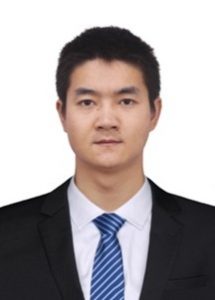
Prof. Xinwang Liu
Bio:
Xinwang Liu received his PhD degree from National University of Defense Technology (NUDT), China, in 2013. He is now Professor at School of Computer, NUDT. His current research interests include kernel learning, multi-view clustering and unsupervised feature learning. Dr. Liu has published 100+ peer-reviewed papers, including those in highly regarded journals and conferences such as IEEE T-PAMI, IEEE T-KDE, IEEE T-IP, IEEE T-NNLS, IEEE T-MM, IEEE T-IFS, ICML, NeurIPS, CVPR, ICCV, AAAI, IJCAI, etc. He is an Associate Editor of IEEE T-NNLS and Information Fusion Journal. More information can be found at https://xinwangliu.github.io/.
Title: SimpleMKKM: Simple Multiple Kernel k-means
Abstract:
We propose a simple yet effective multiple kernel clustering algorithm, termed simple multiple kernel k-means (SimpleMKKM). It extends the widely used supervised kernel alignment criterion to multi-kernel clustering. Our criterion is given by an intractable minimization-maximization problem in the kernel coefficient and clustering partition matrix. To optimize it, we equivalently rewrite the minimization-maximization formulation as a minimization of an optimal value function, prove its differenentiablity, and design a reduced gradient descent algorithm to decrease it. Furthermore, we prove that the resultant solution of SimpleMKKM is the global optimum. We theoretically analyze the performance of SimpleMKKM in terms of its clustering generalization error. Finally, we briefly introduce two variants of SimpleMKKM.

Yong Wang
Bio:
Yong Wang received the B. S. degree and M. S. degree from Harbin Institute of Technology (HIT), Harbin, China, in 2002 and 2004, respectively, both in electronic engineering. He received the Ph. D. degree in information and communication engineering from HIT in 2008. He is currently a Professor with the institute of electronic engineering technology in HIT. His main research interests are in the fields of time frequency analysis of nonstationary signal, radar signal processing, and their application in synthetic aperture radar (SAR) imaging. He received the National Science Fund for Excellent Young Scholars in 2016, and the Program for New Century Excellent Talents in University of Ministry of Education of China in 2012, and the Excellent Doctor’s Degree Nomination Award in China in 2010. Furthermore, he received the second prize of natural science in Heilongjiang Province. Prof. Yong Wang has published more than 160 papers, and more than 90 of them are indexed by SCI, and the total citation time is about 1500. As project leader, he undertakes more than 10 projects such as the National Natural Science Foundation of China. He has been selected as the senior member of IEEE, IET Fellow and the reviewer of 《Mathematical Review》.
Title: Inverse synthetic aperture radar (ISAR) imaging of target with complex motion for the radar-communication integration
Abstract:
Inverse synthetic aperture radar (ISAR) imaging of target with complex motion is very important and difficult in the field of radar imaging and radar-communication integration, and it has great value in practice. For the target with complex motion, the rotational velocity and rotational axis are time varying, and this will induce the time varying character for the Doppler frequency of the received signal. Thus, the traditional radar imaging algorithm will be inappropriate in this case, and the corresponding radar images will be blurred severely and cannot be recognized correctly. Then, the received signal can be characterized as multi-component polynomial phase signal (PPS) for the target with complex motion, and the time frequency analysis for the PPS should be implemented to improve the radar image quality. This report will introduce three kinds of methods, including the parameters estimation, the time frequency representation and the signal decomposition technique for the treatment of multi-component PPS, and combined with the range instantaneous Doppler (RID) technique, the radar image quality can be improved significantly for the target with complex motion.

